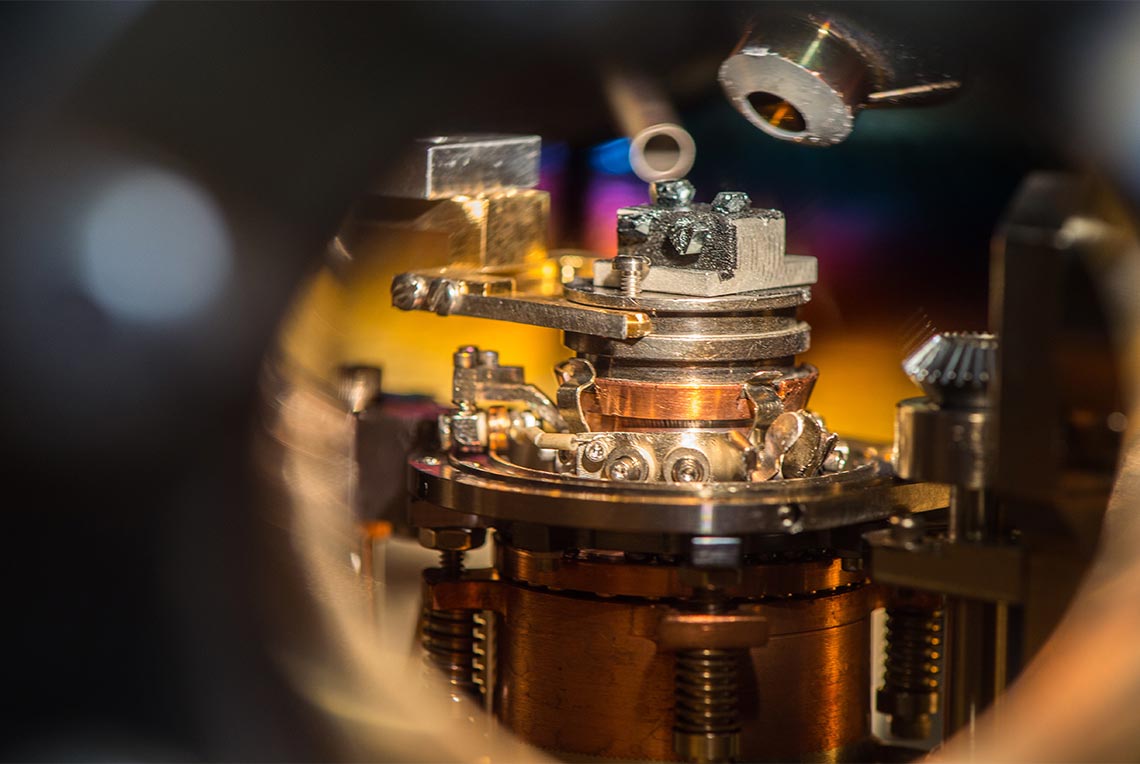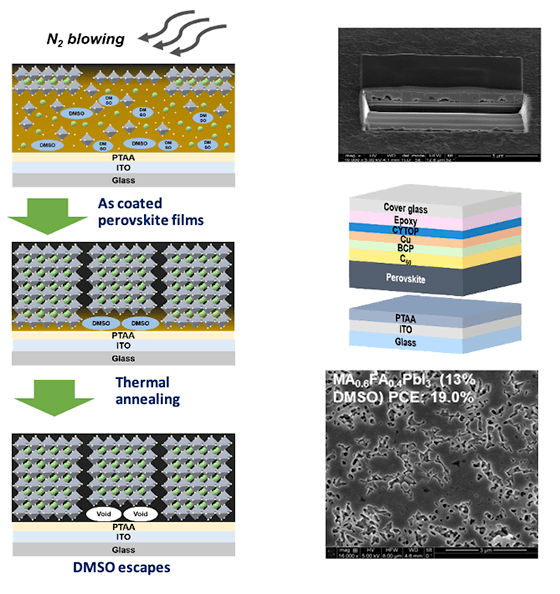Stabilizing Perovskite-Substrate Interfaces for High-Performance Perovskite Modules
August 19, 2021
In this study, we found that dimethyl sulfoxide (DMSO), which is a liquid additive broadly applied to enhance perovskite film morphology, was trapped during film formation and led to voids at perovskite-substrate interfaces that accelerated the film degradation under illumination. These voids cause charge recombination at the voids surface and a reservoir of decomposition products, which accelerates material and device degradation under light.
Scientific Achievement
Our study revealed that perovskites crystalize from top to bottom during solvent evaporation. We further discovered that DMSO, which is a liquid additive broadly applied to enhance perovskite film crystallinity, was trapped during film formation and led to voids at perovskite-substrate interfaces that accelerated the film degradation under illumination. Partial replacement of DMSO with solid-state carbohydrazide reduces interfacial voids.
Significance and Impact
The interfaces of perovskite solar cells are important in determining their efficiency
and stability, but the morphology and stability of imbedded perovskite-substrate interfaces
have received less attention than top interfaces. This study boosted the efficiency
of perovskite solar cells and stability and resulted in a new world record of module
efficiency (19.3% and 19.2%, with aperture areas of 18.1 and 50.0 square centimeters).
Research Details
- Discovered the presence of a large density of voids at the embedded perovskite-substrate interface by peeling off the perovskite films to examine that interface
- Figured out the voids were caused by the entrapped DMSO during the top-to-down drying process
- Discovered partial replacement of DMSO by solid-state carbohydrazide reduces interfacial voids










